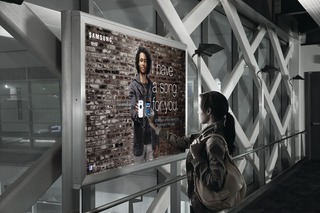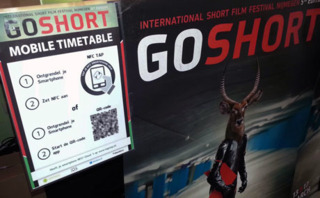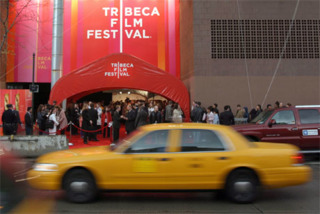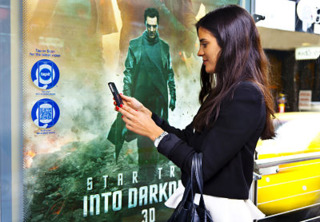Where Do We Stand with NFC?
Excitement about NFC has been around for a long time. How can printers tap into NFC to benefit their clients and create more value?

Excitement about NFC has been around for a long time. So who’s using it for marketing? What is the growth trajectory? How can printers tap into NFC to benefit their clients and create more value?
Good questions. The benefits to NFC are much the same as augmented reality (AR) and QR Codes, enabling access to digital content at the point of interest, but without having to launch an application. Just tap the phone on the poster, advertisement, or other print piece to immediately unlock the content.
NFC is also designed as a secure platform to host mobile payments. Once respondents access the content, they can pay for products, event tickets, and services immediately and securely. If your client has a loyalty program, the member’s status can be checked and updated in real time.
However, like QR Codes, traditional NFC tags are vulnerable to cloning. This opens the door to concerns for retailers, financial services providers, large brands, and others. To address these concerns, newer technology, called “trusted tags,” were developed. These tags change security features on every tap, creating a secure “audit trail” and making them impossible to clone.
Despite the benefits and advances in NFC, the technology has one Achilles heel—Apple. The technology giant has yet to open NFC to developers, making Apple Pay the only NFC capability available to iPhones and iPads users. With Apple having 43.1 percent of the smartphone marketshare (and growing), that’s a big heel.
Data from ComScore’s MobiLens puts Android’s share of the smartphone market at 53.1 percent (it is higher worldwide). However, this is down -.4 percent over the prior three-month period. Apple is up .8 percent over this period, taking share from Android, Microsoft, and Blackberry.
“We haven’t messed with NFC because it hasn’t been adopted by Apple,” said MJ Anderson, CMO for Trekk, a full-service multichannel marketing agency in Rockford, IL. Trekk specializes in mobile marketing technologies using augmented reality and virtual reality. “It’s only good for half the world.”
One area where NFC has taken some hold is in smart posters, or posters that offer some form of mobile interaction, whether NFC, augmented reality, or QR Code. Mobile marketing firm Tamoco (London), for example, worked with HID Trusted Tags to enable New York smartphone owners to tap specially designed posters for the Tribeca Film Festival to get free tickets. Similarly, the Daniels Group (Asheville, NC) worked on a pilot project with BART in San Francisco to add NFC to its transit posters. The goal was to enable travelers to tap the poster to get directions to their nearest Jack in the Box location and receive special offers. They could also use their NFC-enabled phones to pay for their meals.
The Standard Group (Reading, PA) recently tested NFC, as well. It worked with its local AIGA, the design advocacy group, to coordinate the use of NFC with one of its color management boot camps, adding NFC as an activation technology for the event invitations. Recipients could scan the invitation and be taken to the registration page.
“We’d used QR Codes before, and we wanted to inspire people with the newer technology,” said Thanh Nguyen, CMO of The Standard Group.
When folded in, the direct mail piece hides the NFC chip, but recipients can still scan it from the front—through the paper—or when they open it. Cost to add the capability was negligible ($.70 apiece). TSG’s handwork team placed the chips in themselves.
Initially, the mailing was intended to be fully personalized, but as the campaign developed, TSG realized this wasn’t necessary. NFC, did, however provide detailed tracking capabilities. The production run was short—453—and there were 62 scans (all Android devices). In total, 13.6 percent of recipients used the tag.
Many of the case studies and examples of NFC usage are trials or one-off campaigns. Ongoing campaigns involving NFC are much fewer. At some point, we would expect Apple to open its platform to developers. Once this roadblock is lifted, the environment should improve.
Still, Apple is dragging its heels. “We’d love to see Apple adopt the standard with the release of iOS 7,” muses Trekk’s Anderson, who has expressed frustration that Apple is waiting, not just with NFC but with other technologies, as well. “There were no new announcements on the AR front at their Dev conference and there has been nothing on the Metaio purchase from last year. This has left people to speculate perhaps that Apple is only using the image recognition features for Memories (their new way to organize and present images in your camera roll), which is basically visual search.”
According to Target Marketing’s “2015 Media Usage Survey,” 20 percent of marketers were using NFC in 2015, and six percent were increasing their spending on NFC. The publication did not ask about NFC in its 2016 survey.
Despite the challenges, there are compelling reasons to encourage your clients to experiment with NFC.
- NFC platforms provide marketers with lots of data that capture the real-time behavior of shoppers that can be used to refine personalized marketing touches in the future. If people access a download, make a purchase, or take some other step that identifies them, this gives your client direct insight into what they are purchasing, when, and where.
- NFC platforms give marketers insight into how many people are interacting with displays, posters, magazine advertisements, and other hard-to-track channels. The tracking is sophisticated enough to identify, not just that it was coming from a poster, but which poster, specifically.
- NFC doesn’t require launching an app, which makes the scanning behavior less “bulky.” If all people have to do is tap or wave their phone in front of an NFC-enabled poster or display, this is a much more natural behavior. When something is easier, it’s more likely to be used.
Of course, augmented reality and proprietary QR Codes do many of the same things without the cost of the NFC tag. But the combination of the “no app to launch” and secure protocols for mobile payments is a powerful one.
So don’t let current challenges stop you from engaging your customers on the topic of NFC. Even as we wait for Apple to make its move (any move please!), they can still let Android users download app, coupon, video, or join loyalty program. Then you track the results.
Want to estimate what the results would be once Apple does support full NFC? Just multiply your results by 1.43. You know, just for fun.



